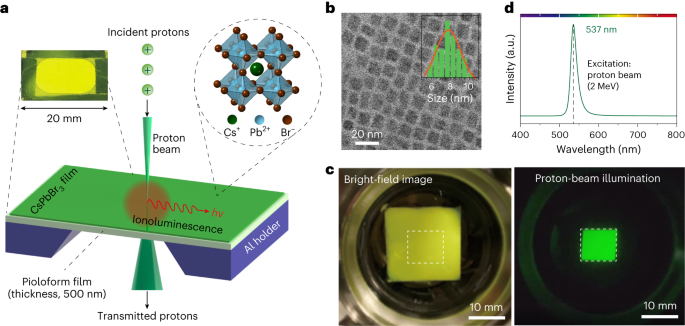Science Daily February 1, 2024
Current particle detectors use bulk crystals, and thin-film organic scintillators have low light yields and limited radiation tolerance. An international team of researchers (Singapore, China) has developed transmissive thin scintillators made from CsPbBr3 nanocrystals, designed for real-time single proton counting. The scintillators exhibited exceptional sensitivity, with a high light yield when subjected to proton beams. The enhanced sensitivity was attributed to radiative emission from biexcitons generated through proton-induced upconversion and impact ionization. The scintillators could detect as few as seven protons per second, a sensitivity level far below the rates encountered in clinical settings. According to the researchers a combination of rapid response and pronounced ionostability enables diverse applications, including single-proton tracing, patterned irradiation, and super-resolution proton imaging. These advances have the potential to improve proton dosimetry in proton therapy and radiography… read more. Open Access TECHNICAL ARTICLE

Proton-induced luminescence from CsPbBr3 nanocrystal scintillator. Credit: Nature Materials, January 8, 2024